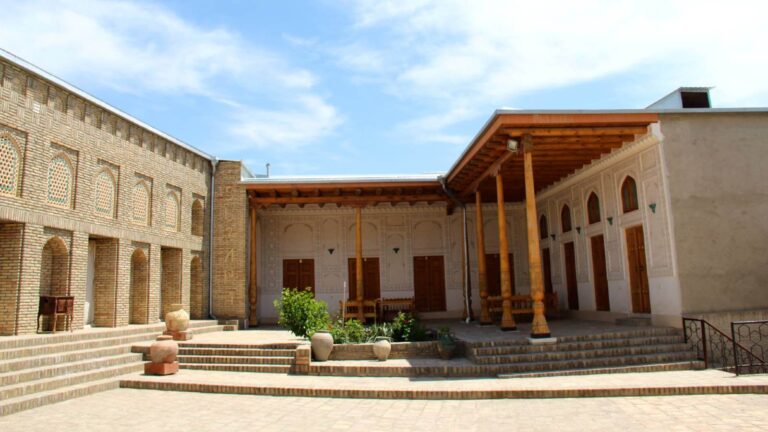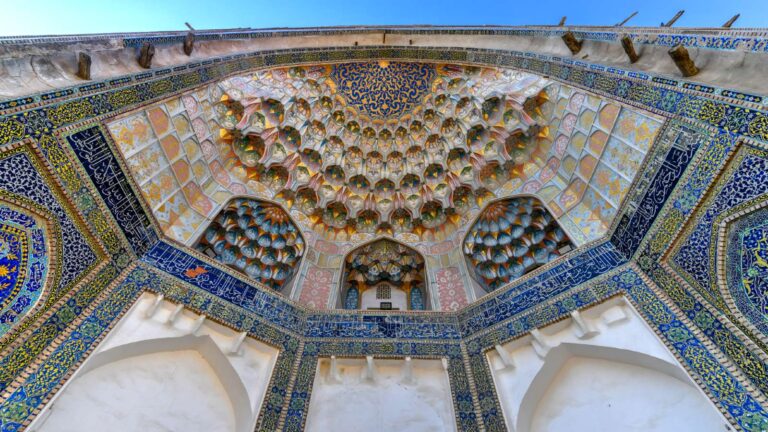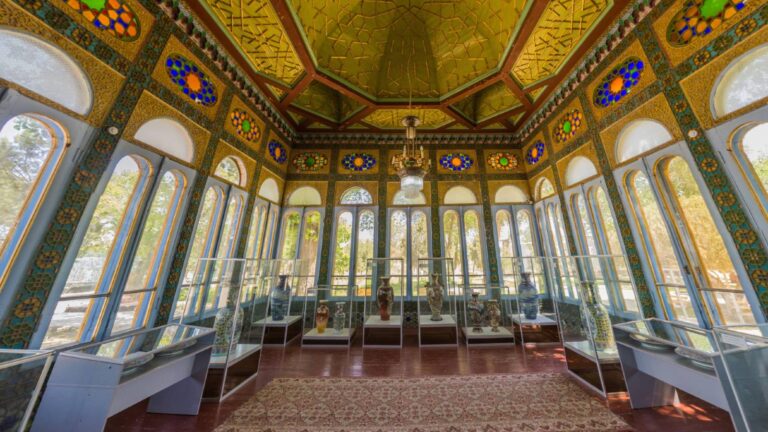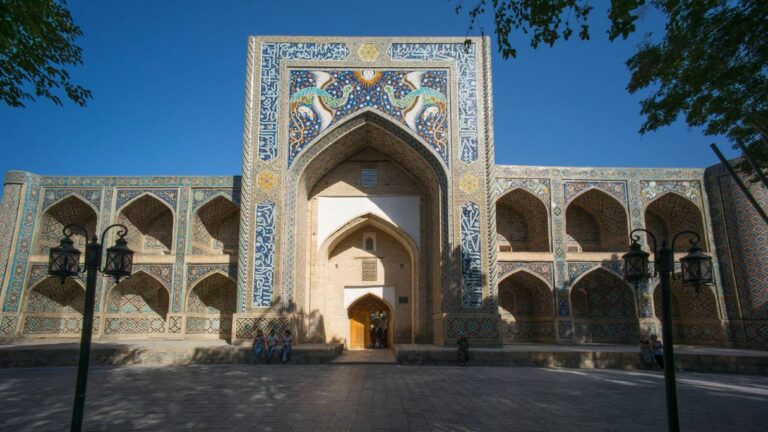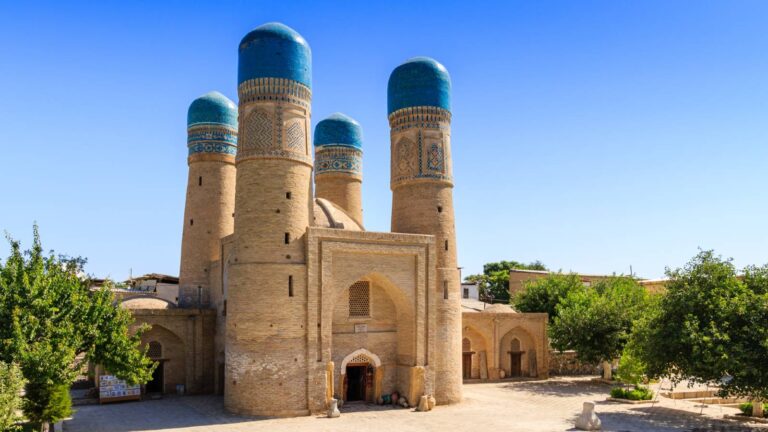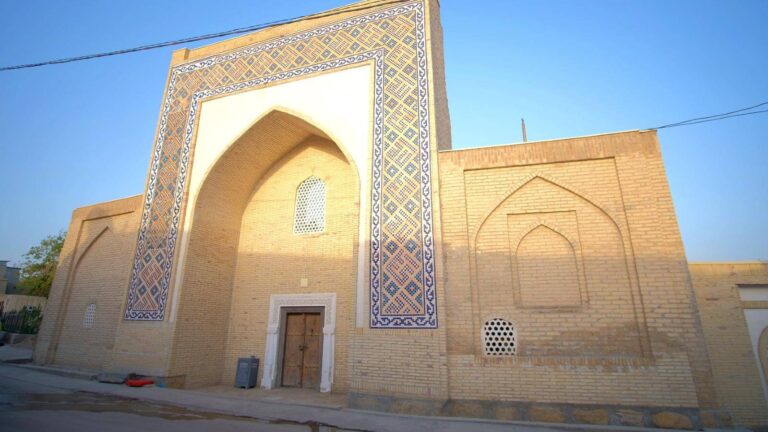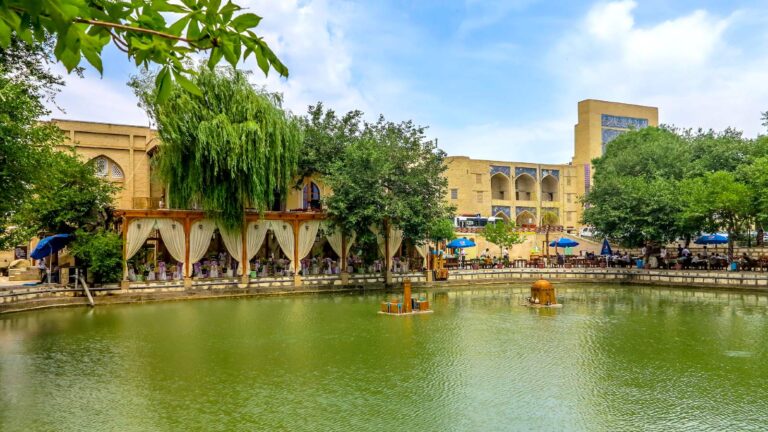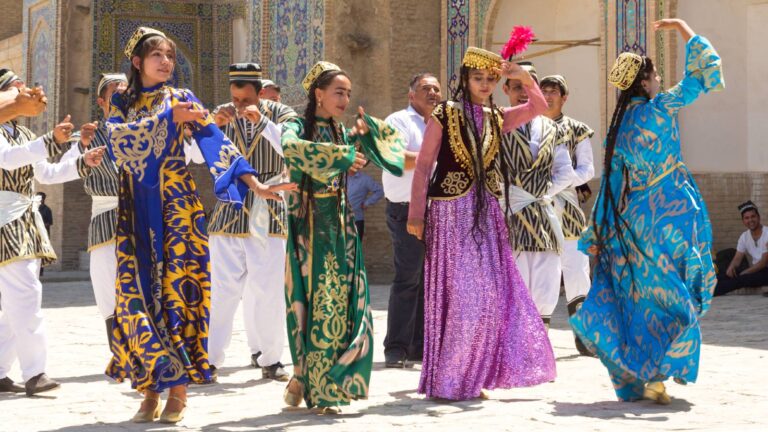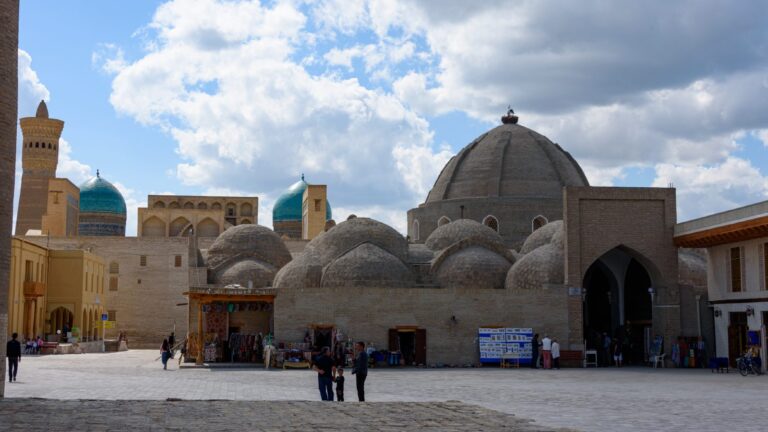Getting There
Bolo-Khauz Complex is the only preserved monument on the Registan Square. It is located on the opposite site of Ark – the Emir’s fortress. The complex consists of the reservoir, Friday mosque and minaret.
You can get there by taxi and also on foot if you are in Bukhara
Taxi orders work in Bukhara. Numbers: 1054, 1191
What to Expect
The mosque is rectangular shaped. The prayer room during the winter time is a room with four columns and several entrances. The 12-meter-high iwan, comprising a 20-pillared hall measuring 42 x 10 meters, and bordered by bulged roofs sustained with twenty wood columns, serves as a summer prayer room attached to the three sides of the winter hall. The wooden columns rest on concrete foundation. The interior of the mosque is typical 18th-century Central Asian style.
History
Bolo Haouz Mosque is a historical mosque in Bukhara, Uzbekistan. Built in 1712, on the opposite side of the citadel of Ark in Registan district, it is inscribed in the UNESCO World Heritage Site list along with the other parts of the historic city.
It served as a Friday mosque during the time when the emir of Bukhara was being subjugated under the Bolshevik Russian rule in 1920s. Thin columns made of painted woods were added to the frontal part of the iwan (entrance) in 1917, additionally supporting the bulged roof of summer prayer room. The columns are decorated with colored muqarnas.
Facilities Available
The mosque has managed to survive to this day and still receives visitors for Friday prayers. The building itself still has a graceful and luxurious appearance (remember, it was built for the ruler), making it one of the most popular sights in modern Bukhara.
The building has been decorated for over three centuries with twenty wooden columns with intricate carvings that confidently support the ceiling of the mosque. The city’s residents call Bolo-Havuz by no other name than “the mosque of forty pillars”. The complex got this name because of the twenty pillars and their reflection in the pond.

